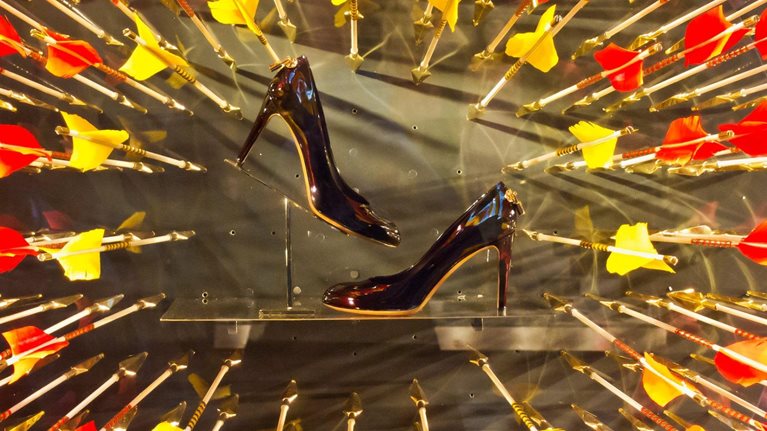Every year, wealthy and middle class Chinese spend increasing amounts of money on luxury goods. But you wouldn’t know this from looking at Mainland China’s luxury sales figures, the growth rate of which is projected to drop from the heady double digit leaps of year’s past to just 2.5 percent this year. Instead of purchasing high-end clothes, watches, shoes and handbags at home, the Chinese are buying them on trips outside the country.
In other words, within the luxury goods business, it is not so much about China's domestic sales, as it is the increasingly peripatetic Chinese.
These travelling consumers are a large, fast growing and increasingly global population. Last year, the Chinese took an estimated 93 million trips overseas, up from 17 million in 2002. And, since only 8 percent of citizens currently have passports (compared to 33 percent of Americans), there is ample room for growth. New airports keep popping up around China and countries like France, Italy and Belgium are altering their visa requirements to make it easier for the Chinese to visit. By 2016, the Chinese are expected to take 135 million overseas trips annually, for a forecasted growth rate of 13 percent.
In doing so they are venturing increasingly farther from home. While going on shopping-centric trips has traditionally meant Hong Kong and Macau, these days more and more Chinese are venturing to Europe and the U.S. In 2012, 38 percent of Chinese travelers on long-distance trips visited Europe and 13 percent came to the U.S.
The total amount of money the Chinese are spending on these trips is surging as well, up from $18 billion in 2002 to a projected $154 billion in 2014. Shopping continues to comprise the biggest chunk of this spending. One-third of what’s spent on travel goes toward buying goods – often luxury items – to take back home. (21 percent goes to transportation and 12 percent to food and beverage.) In 2012, nearly three-quarters of the traveling Chinese consumers McKinsey surveyed reported that they had bought a luxury product while abroad sometime in the past 12 months.
All in all, this market forms a critical strategic imperative for luxury goods companies. With the Chinese representing no less than 27 percent of global luxury purchases and more than 60 percent of this being conducted overseas, engaging these consumers and understanding their Consumer Decision Journey is critical to the future success of most luxury brands. For some brands it is a matter of do or die, since as much as one-third of their home country revenue is coming from Chinese tourists.
Different types of Chinese tourists
As the market grows and many Chinese become veteran tourists, reaching these consumers is becoming more challenging as there are now multiple segments. There are at least three types of consumers that companies must understand and engage:
1) The ultra-wealthy veteran traveler – These consumers, many of them businessmen, go on multiple overseas trips per year and spend, on average, nearly $4,500 per trip, with a few thousand of that going to luxury purchases. More than any other segment, these consumers value a high level of service and want to feel that they have access to goods that would not be available at home in China. These tenured shoppers are looking for less well known brands and ever-more luxurious items.
2) The newcomers – This category of upper middle class consumers are traveling abroad for the first time, often coming from tier 2 or 3 cities, and typically as part of a tour bus group. Organized tours remain the most popular way for Chinese to travel abroad, although the number of Chinese travelling independently is growing rapidly. Some 95 percent of Chinese visitors to Louis Vuitton shops in Paris are on organized tours, most of which include shopping destinations as part of the official itinerary. These consumers are eager to shop in flashy flagship stores and they place particular value in the brand experience.
3) New repeats – For these consumers, annual travel to Europe and other destinations is becoming an important and valued part of their lives, allowing them to spend their newfound disposable income on seeing the world and experiencing the best retail experiences it has to offer. As these consumers become more comfortable with and knowledgeable about travel, they are moving away from organized tour groups and traveling independently. Consequently, their reliance on the Internet for trip planning is high, with online and social sites often serving as a source for identifying “must shop” stores.
